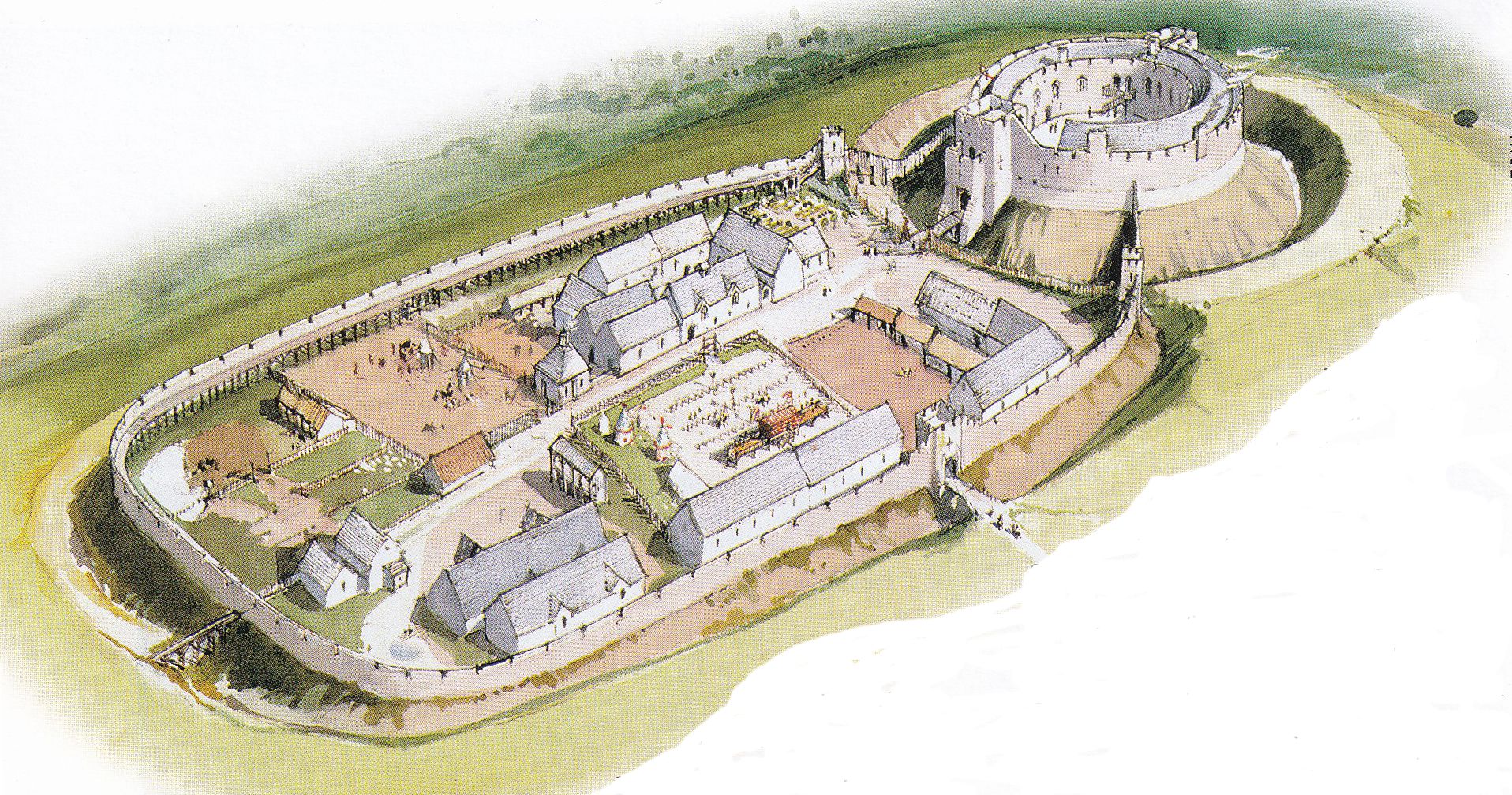What Three Words: ///upon.mashing.daredevil
OS Grid Reference: SX104613
The most imposing building in Lostwithiel and one of the best-preserved Norman castles in Cornwall, the castle has been guarding the river and road approaches for 2000 years
Restormel Castle is a ring work and bailey that originated (probably in wooden form) in the early 12th century. Its development and growth is intricately associated with that of Lostwithiel as the probable seat of the Cardinan (later Cardinham) family in the 12th and 13th centuries. Restormel Castle’s first documentary mention was in 1265, when it was handed over to an intermediary during the baronial wars against King Henry III. The transition from private control to Royal ownership occurred soon after this date when Richard Earl of Cornwall (brother to Henry III) confirmed, by a document dated 1268, his ownership of the castle, deer park, hermitage, fisheries and mills. Although Richard died four years later, it is likely that Edmund, his son, carried on his father’s ideas for the re-development of Lostwithiel, and Restormel’s transition from a defended castle to a royal residence and manorial administration. Residents of Lostwithiel enjoy free entry to the castle, a survival of its historical role as a place of refuge.
The castle consists of a stone shell keep and internal buildings with ancillary buildings placed in the bailey (near the present kiosk). The bailey included stables, the kitchens, and housed a castle staff, including timber workers, honey collectors, and fishermen. A survey of 1337 listed these buildings and the gatehouse roof as being in a decayed state, but presumably they were repaired sufficiently for the Black Prince (Edward Woodstock, eldest son of Edward III and the first Duke of Cornwall) to stay in Restormel Castle on three, or possibly four, occasions to hold court.

The castle showing its bailey (Historic England)
After Edward’s death, the castle slowly fell into further disrepair, whilst Lostwithiel also declined as a port (owing to tin waste silting the river and restricting access by sea-going ships). The castle was briefly fought over in August 1644 by the Parliamentarians and Royalists, with the former seizing the castle and converting the roof of the chapel to accommodate a cannon to bombard Royalist positions to the east. Shortly after this, Royalist forces defeated the Parliamentarians (destroying the gatehouse in the process) both at the castle and in Lostwithiel. This short battle proved to be the castle’s final chapter of occupation (but perhaps the first time it had been fought over). Successive visits by 16th - 19th century travelling ‘surveyors’ commented on its ‘sad decayed appearance’.
The remains of a Roman fortlet are barely visible on a hill to the south east of the castle (location: ///motored.flinch.perky SX102610). This was built on the site of a temporary camp and dates from the 1st Century AD. This fortlet was, perhaps, an out-station of the larger Roman base at Nanstallon (west of Bodmin), and had probably been set up to oversee the transport down river of tin destined for export to Gaul, Rome, and the wider empire. This is probably the first site of any significant settlement at Restormel. At this time, the local population lived in the surrounding farmsteads, such as that at Bodardle, and perhaps in a small cluster of houses by the river. The remains of a Roman trackway lead from the fortlet to its base at Nanstallon. This track followed the line of what is now the B3268 from a point just north of Higher Demesne Farm towards Sweetshouse, Maudlin, and Trebyan. Occupation of the fortlet continued into the third century, though it was probably by this time a farming settlement linked to the works by the river.
Was the Roman fortlet really called Uzella?